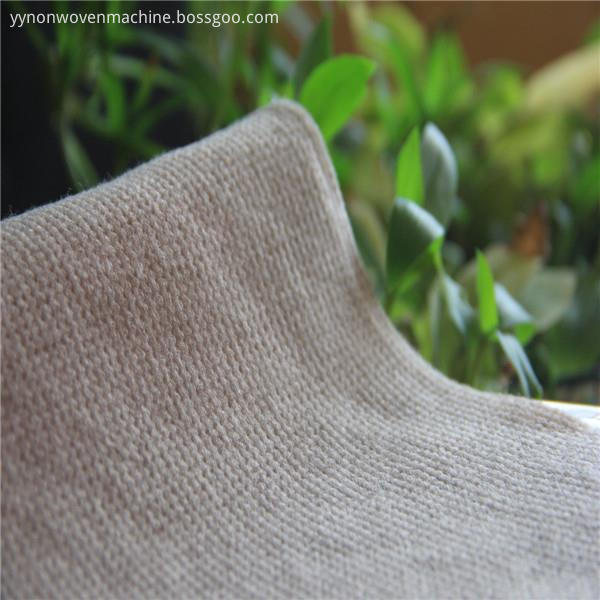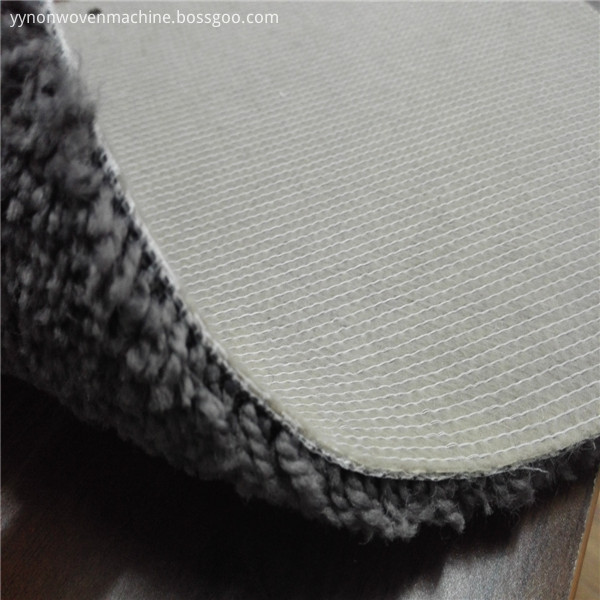Comments: New energy vehicles need to go out of place to protect the ice
The stitch-bond nonwoven fabric mainly composed of
polyester fibers composition, compared with the traditional jute and
Action-bac, our product has the following characteristics:
1.
Mould proof and pest against
2.
More evenly daub glue
3.
Effective protection for yarn
4.
Easy processing.
Details of stitch-bond nonwoven fabric:
GSM:60g/㎡-150 g/㎡
Raw material: PET raw material, PET recycling material
Color: White or black or upon your request
Advantages of stitch-bond nonwoven fabric:
1. Durability, disposable, insulation, electrical
conductivity, softness, stiffness, fineness, and expansion.
Our product application covers carpet materials, me-tope
auxiliaries, waterproof systems, auto interior materials, home textile materials,
packaging materials and other fields
Stitch Bonded Fabric,Stitch Bonded Softback,Resistant Waterproof Fabric,Stitch Bonded Non Woven Fabric Yangzhou Yuyang Nonwoven Machinery Co., Ltd , http://www.yynonwovenmachine.com
After the Ministry of Finance and other four ministries and commissions introduced a new round of subsidy policies for new energy vehicles, the local version of supporting measures will be gradually introduced. However, at the same time as the country vigorously promotes new energy vehicles, there has been a phenomenon of excessive local protection. New energy vehicle enterprises can basically produce and sell their products within the province. The Ministry of Finance and other four ministries announced the list of the second batch of pilot cities in the near future. They also explicitly proposed that the requirements for local protection of new energy vehicles be eliminated.
The development of new energy automobile industry is of great significance for energy conservation and emission reduction and improvement of the environment. However, as an emerging industry, new energy vehicles cannot bypass the lack of mature technologies, inadequate industrial development, and the product price/performance ratio is insufficient to compete with traditional energy vehicles, charging, and other infrastructure facilities. With a series of problems such as construction, the promotion of new energy vehicles can only be gradual, and demonstration applications should be carried out in qualified cities.
However, the practice of the pilot cities is not satisfactory, and local protectionism is very popular. Not only are the local supporting subsidies different, but even in the allocation of central government subsidies, local governments set entry barriers in accordance with the requirements of local enterprises, allowing the central government to fall into the pockets of local new energy auto companies. The reality of new energy vehicle sales is that Beijing’s electric vehicles are hard to break into the southern market, and BYD’s new energy vehicles in Shenzhen have been left without doors. And Chongqing, Henan, and other places are all distributing local subsidies to local companies. New energy car companies simply cannot promote their products to the national market.
All provinces and cities have strong local support for the research, promotion, and subsidy policies for new energy vehicles. Even the establishment of new energy vehicle projects and the ownership structure of the new energy vehicles are inextricably linked to the government. Chongqing is in Chang'an, Shenzhen is in BYD, Wuhan is in Dongfeng, Anhui is in Chery, etc. This is true. In local procurement, these companies often become guests. In addition, local governments have proposed the sales targets for the 12th Five-Year New Energy Vehicle. From the government itself, the introduction of a large number of new energy vehicle competitors will have an impact on the local auto companies' ecology.
Therefore, to dissolve the ice of local protectionism, it is fundamental that the subsidy policies for new energy vehicles of relevant state ministries and commissions must be fair and just. First, the ministries must clarify the scope of subsidies, supervise and inspect the implementation of local governments, and establish a local directory of local governments to restrict the invisible protection of foreign car companies and give them a firm halt and rectification. It is necessary to limit the space and market for local protectionism in the promotion of new energy vehicles through social media.
Second, establish a unified new energy automobile trading market, and truly promote the development of new energy vehicle market. Returning the market to the market, the government managed it well. The key to the development of new energy vehicles is not unified subsidies. Instead, it is the government that has actively promoted the construction of supporting facilities to form a truly effective market mechanism and supported enterprises to seek more reliable business models.
Third, with reference to the European and American new energy vehicle market, explore more mature subsidies or tax relief methods. It may consider changing the original way of subsidizing financial funds, directly grant subsidies to car companies, and maintain fair competition among enterprises. For consumers, the necessary incentives and policy guidance can be implemented through tax deductions.
Fourth, new energy vehicle standards should be unified as soon as possible. The adoption of different facilities by enterprises will result in the inconsistency of standards, resulting in a series of repetitive labor and huge R&D costs for charging piles and batteries. The inconsistency of these basic ancillary facilities will lead to new energy vehicles not only failing to go abroad, but even the provincial gates.
Of course, for new energy vehicles, it is still important to nurture the market. A variety of policy combinations can be used to promote the application of new energy vehicles. At the same time as subsidies and tax reductions, new energy vehicles may be given preferential loans, highway toll concessions, And give greater opportunities to acquire city license plates.


2. Isotropic, anisotropic, filterable, breathable, impervious, and stiff.
3. Light, loose, warm, thin as a flap, thick as felt, waterproof and
breathable.
4. Ironing, stitching, compression molding, flame retardant, antistatic, water
permeable, waterproof, abrasion resistant, and napped.
5. Resistant to wrinkles, good elasticity, high moisture absorption, water
repellency.